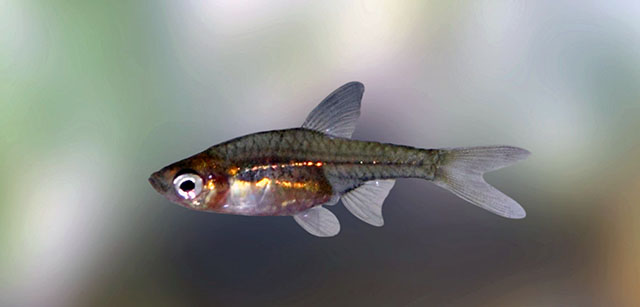| Danionidae (Danios), subfamily: Rasborinae |
| 3 cm TL (male/unsexed) |
|
pelagic; freshwater; brackish; pH range: 6 - 6.5; dH range: 12 |
| Asia: Sri Lanka. |
|
Dorsal soft rays (total): 10-10; Anal soft rays: 8-8; Vertebrae: 24-26. Horadandia atukorali differs from its congener H. brittani by having a more slender body (depth 24.6-29.8 % SL, vs. 27.7-31.9); dorsal profile of head slightly concave (vs. straight) behind level of eye; a greater eye diameter (37-41 % HL, vs. 27-37); origin of dorsal fin slightly posterior to (vs. distinctly behind) origin of pelvic fin; pelvic fin reaching beyond anal-fin origin (vs. just reaching anal-fin origin); origin of dorsal fin located halfway between snout tip and hypural notch (vs. closer to hypural notch); one (vs. none) lateral process on each side of kinethmoid; anterior end of kinethmoid narrow (vs. wide); palatine process of maxilla acute (vs. obtuse); and supraorbital length ~50 % of orbit diameter (vs. ~44 %) (Ref. 94541). |
| Inhabits still or slow-moving water, frequenting swamps, rice fields and similar still waters. Found in weedy ponds of coastal plains (Ref. 4832). Common in less saline mangrove swamps and in less polluted canals. Often encountered together with Aplocheilus. Feeds on insects. |
|
Vulnerable (VU); Date assessed: 07 August 2019 (B1ab(iii)+2ab(iii)) Ref. (130435)
|
| harmless |
Source and more info: www.fishbase.org. For personal, classroom, and other internal use only. Not for publication.

